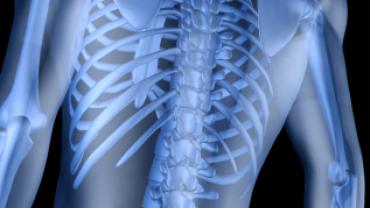
When we think about vitamin K visions thoughts and images of blood clots dance through our heads (well maybe not literally but just indulge me here OK?). And while vitamin K1 is of course the primary quinone (quinones are a group of related compounds characterized by an aromatic ring) involved in the blood coagulation pathway another group of vitamin K compounds under the banner of K2 bring with them some interesting properties of their own.
Vitamin K2 a subgroup known collectively as the menaquinones differs from K1 known as phylloquinone in the saturation of the side chains attached to their aromatic ring. However within the K2 family are a number of variations determined by the actual number of these side chains which dictate their subsequent designation; for instance menaquinone 7 or MK7 possesses seven side chains while MK4 is comprised of four side chains.
In general both are naturally occurring with K1 entering the diet primarily through green leafy vegetables whereas K2 is introduced in the form of MK7 through certain fermented foods and MK4 is presented through its synthesis by gastrointestinal bacteria.
The most recent research on vitamin K2 has focused on its role in bone metabolism and cardiovascular health. In bone health and its physiology vitamin K2 functions in the conversion and activation of vitamin K-dependent proteins such as osteocalcin a bone protein involved in calcium uptake and bone mineralization. Osteocalcin is synthesized in osteoblasts. Another protein called Matrix Gla protein (MGP) found in bone tissue also requires vitamin K for its proper function. MGP and osteocalcin are both calcium-binding proteins that participate in the mineralization and architecture of bone tissue.
Osteoclasts are the bone cells responsible for bone catabolism and their formation activation and subsequent bone reabsorption activity is influenced by the nuclear factor B (NF-B) signal transduction pathway. Vitamin K2 down-regulates NF-B activation modulating osteoblast and osteoclast formation displaying a dual pro-anabolic and anti-catabolic role which appears to promote overall bone health and metabolism.
It is the relationship between vitamin K2 bone and cardiovascular health where things get interesting. People with osteoporosis are more likely to display atherosclerotic calcification in their blood vessels while those with atherosclerosis are more likely to exhibit lower bone density. What do these divergent groups have in common? Both reveal insufficient vitamin K levels.
While these particular properties of vitamin K2 are well-documented and widely accepted it may be K2's other less well-known properties that may be of additional interest to the clinician. Take for instance cancer. High menaquinones but not phylloquinone intake has been associated with a decreased risk of developing prostate cancer while helping to reduce the reoccurrence of hepatocellular carcinoma. In in vitro cell studies vitamin K2 has been shown to induce autophagy and apoptosis in leukemia cells. Another study went so far as to suggest that higher consumption of vitamin K2 will help reduce overall cancer induction and fatal cancer mortality.
In a very interesting study researchers discovered that when evaluated in models of mitochondrial dysfunction similar to that expressed by individuals suffering with Parkinson's vitamin K2 acted as a electron carrier similar to CoQ10 and was shown to rescue energy production increasing production of ATP. In Parkinson's patients the activity of mitochondria and the transport of electrons have been disrupted resulting in the mitochondria no longer able to produce sufficient energy for the cell and its survival. As such the cells in certain parts of the brain start dying off disrupting communication between neurons and resulting in the symptoms of tremors and muscle stiffness that are typically associated with the condition.
Finally vitamin K2 in the MK4 form was shown to demonstrate therapeutic utility in mouse models of rheumatoid arthritis as the compound inhibited the proliferation of rheumatoid synovial cells and the development of collagen-induced arthritis while in another study MK4 was shown to inhibit destructive osteoclast activity in human study subjects with rheumatoid arthritis.
Michael Fuhrman D.C.